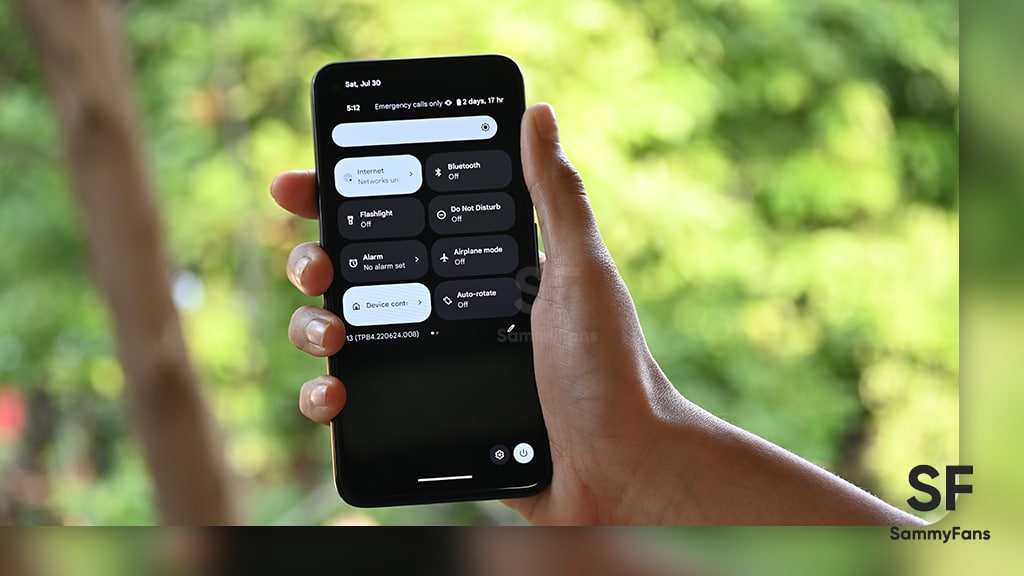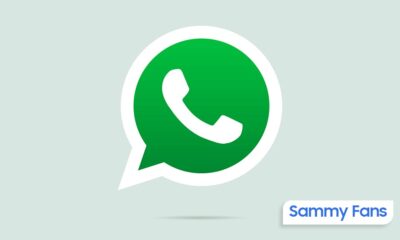Android
Three cool features that Android phones have but iPhones don’t

There are two major mobile operating systems – Android and iOS created by Google and Apple, respectively. Although Android does have a few features that the iPhone still doesn’t have even after several updates. Here is a list of three capabilities that an iPhone lacks to assist you in choosing between the two.
Creating Guest Accounts and Multiple Users
In contrast to Apple, which has completely disregarded this function over the years, it was launched on Android devices with Android 5.0. When your children or friends use your phone, the feature lets you protect your privacy.
Join SammyFans on Telegram
You can hand over the device after logging in with a different user or guest account. Each user can have their own unique apps, data, and passwords. If you wish to use numerous profiles on your smartphone, we’ve taught you how to create multiple users on an Android device.

The call and SMS settings for the multiple-user features can also be modified. You can decide whether to let other users call you or send you SMS notifications. In addition, you can download programs directly from other users rather than downloading them again, and if one person updates an app, it will be updated for all users.
Follow Sammy Fans on Google News
Access Internal Storage
An iPhone only allows you to access photos and movies when it is connected to a computer via a USB cable. A desktop and an Android phone can share any file because an Android phone has access to your complete internal storage, on the other hand.
Any vehicle that supports Android Auto can be connected to an Android phone via a USB cable in order to use various apps and navigation. Additionally, your phone can share its connection to the internet with the PC via the USB Tethering feature.
Customize home screen
On iPhones, there have never been many choices for customizing the home screen. Apple added several capabilities with iOS 14, such as the App Library and Home Screen Widgets, but they still lag far beyond what an Android phone can do.
An Android phone can change the icon packs and launchers, among many other home screen customizations. You can find a tonne of independent icon sets for your home screen in the Google Play Store. A Themes app that lets users apply system-wide themes and modify fonts or icon packs can even come preinstalled on some Android smartphones.
Android
Google unveils Android 16 Developer Preview with exciting features

Google has kicked off the Developer Preview for Android 16, arriving earlier than expected. Usually, these previews begin in February, but Android 16 DP1 is launching three months ahead of schedule this year.
The earlier release of the DP1 is because Google has moved the official Android 16 release from the third quarter to the second quarter of 2025. It aims to ensure that more devices get access to the major Android updates sooner.
Android 16 DP1 is available for several Pixel devices, including the pixel 6, Pixel 6 Pro, Pixel 6a, Pixel 7, Pixel 7 Pro, Pixel 7a, Pixel Tablet, Pixel Fold, Pixel 8, Pixel 8 Pro, Pixel 8a, Pixel 9, Pixel 9 Pro, Pixel 9 Pro XL, and Pixel Pro Fold, as well as the Android Emulator. It can be identified through version BP21.241018.009.
![]()
The Android 16 Developer Preview brings new features for app developers. It brings a system photo picker that will help apps give users a smoother, more integrated way to select photos without needing extra permissions.
Another new feature is Health Connect, which lets apps access and manage medical records in FHIR format, but only with user permission. The update also includes the latest version of the Privacy Sandbox for privacy protection.
This preview program runs from November 2024 until the final public release next year. Android 16 Beta Program will begin in January, with the final stable release expected in Q2 of 2025. Stay tuned for more updates.
Android 16 to make Quick Settings access easier with one-finger swipe
Android
Google’s Android 15 QPR2 Beta 1 update is now available

Google has released the first beta of Android 15 QPR2 for Pixel users. The update can be identified via build version BP11.241025.006. However, users are also waiting for the stable release of Android 15 QPR1 in December this year.
Android 15 QPR2 Beta 1 update comes with the November 2024 security patch. It is available for a wide range of Pixel devices, including Pixel 6, Pixel 6 Pro, Pixel 6a, Pixel 7, Pixel 7 Pro, Pixel 7a, Pixel Tablet, Pixel Fold, Pixel 8, Pixel 8 Pro, Pixel 8a, Pixel 9, Pixel 9 Pro, Pixel 9 Pro XL, and Pixel 9 Pro Fold, as well as the Android Emulator.
Quarterly Platform Releases are updates that bring more noticeable changes and new features compared to the usual monthly bug fixes. These updates are perfect for testing out bigger UI changes or new features that don’t need to wait for a full Android version release.
![]()
The QPR2 Beta 1 is the second major update for Android 15, with the final version expected to launch in March 2025 (via 9to5Google). This update brings the usual bug fixes, security enhancements, and new features to test.
Users participating in the beta program are advised to report any issues via the Android Beta Feedback app, easily accessible through the app drawer or Quick Settings. Install the update now to get an enhanced experience.
Android 16 to make Quick Settings access easier with one-finger swipe
Android
Android 16 to make Quick Settings access easier with one-finger swipe

Google is reportedly going to bring an interesting change with Android 16, which will no longer require two fingers to pull down the Quick Settings panel. Previously, there were concerns that users would need to swipe down with two fingers to bring up the Quick Settings. Fortunately, Google has decided to simplify this process.
With Android 16, accessing the Quick Settings will only require a single-finger swipe down on the right half of the status bar. The one-finger swipe access aligns it more closely similar to other Android manufacturers, like OnePlus and Samsung, have designed their systems.
Several users didn’t like the idea of needing two fingers to swipe down, as it felt more awkward and less convenient. By switching to a single-finger swipe for Android 16, Google will make it easier for users to manage their settings with less effort. A well-known tipster Mishaal Rahman (via Android Authority) spotted the code for this Quick Settings change.

However, the new design still lacks the ability to swipe seamlessly between the notifications and Quick Settings panels. Hopefully, Google will add this feature before the official release.
In addition to the swipe change, Android 16 will introduce resizable Quick Settings tiles and better categorization to help users find specific settings more easily.
However, these features are still being worked on and may not be fully ready in the current beta. They are expected to roll out in the final Android 16 release, which is expected in mid-2025.












